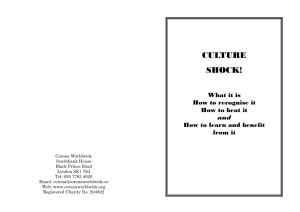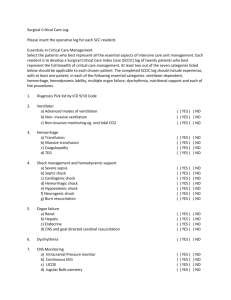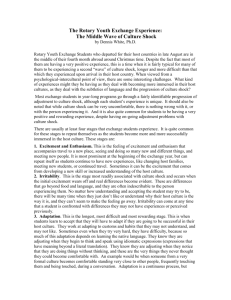Mandatory Reading
advertisement
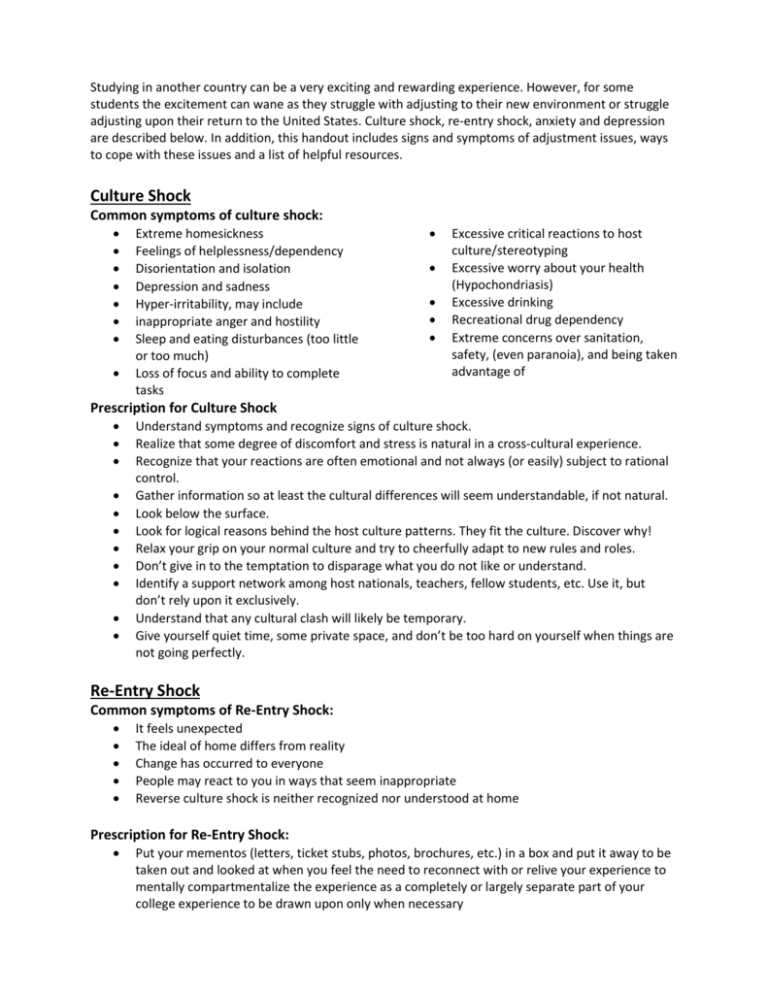
Studying in another country can be a very exciting and rewarding experience. However, for some students the excitement can wane as they struggle with adjusting to their new environment or struggle adjusting upon their return to the United States. Culture shock, re-entry shock, anxiety and depression are described below. In addition, this handout includes signs and symptoms of adjustment issues, ways to cope with these issues and a list of helpful resources. Culture Shock Common symptoms of culture shock: Extreme homesickness Feelings of helplessness/dependency Disorientation and isolation Depression and sadness Hyper-irritability, may include inappropriate anger and hostility Sleep and eating disturbances (too little or too much) Loss of focus and ability to complete tasks Excessive critical reactions to host culture/stereotyping Excessive worry about your health (Hypochondriasis) Excessive drinking Recreational drug dependency Extreme concerns over sanitation, safety, (even paranoia), and being taken advantage of Prescription for Culture Shock Understand symptoms and recognize signs of culture shock. Realize that some degree of discomfort and stress is natural in a cross-cultural experience. Recognize that your reactions are often emotional and not always (or easily) subject to rational control. Gather information so at least the cultural differences will seem understandable, if not natural. Look below the surface. Look for logical reasons behind the host culture patterns. They fit the culture. Discover why! Relax your grip on your normal culture and try to cheerfully adapt to new rules and roles. Don’t give in to the temptation to disparage what you do not like or understand. Identify a support network among host nationals, teachers, fellow students, etc. Use it, but don’t rely upon it exclusively. Understand that any cultural clash will likely be temporary. Give yourself quiet time, some private space, and don’t be too hard on yourself when things are not going perfectly. Re-Entry Shock Common symptoms of Re-Entry Shock: It feels unexpected The ideal of home differs from reality Change has occurred to everyone People may react to you in ways that seem inappropriate Reverse culture shock is neither recognized nor understood at home Prescription for Re-Entry Shock: Put your mementos (letters, ticket stubs, photos, brochures, etc.) in a box and put it away to be taken out and looked at when you feel the need to reconnect with or relive your experience to mentally compartmentalize the experience as a completely or largely separate part of your college experience to be drawn upon only when necessary Anxiety Common Symptoms of Anxiety: Mind consistently going blank during exams or oral presentations Unrealistic fears and worries Physical complaints (such as upset stomach or rapid heart rate) The avoidance of those situations that are associated with an anxious experience Prescription for Anxiety: Good Self Care Limit Stress‐Inducing Chemicals Increase Recreational/Relaxing Activities Monitor Stress‐Inducing Thoughts Engagement in Meaningful Activities Sleep pattern change (either oversleeping or insomnia); Thoughts of suicide; Difficulty concentrating; Irritability; anxious feelings and Excessive crying. Depression Common Symptoms of Depression: Sadness; empty feelings; Feelings of hopelessness and worthlessness; Fatigue; decreased energy; Loss of interest in usual activities; Change in appetite and weight (either loss or gain); Prescription for Depression: Seek emotional support Seek professional help Engage in physical activities such as exercise Engage in social activities Engagement in Meaningful Activities Crisis Information If you or someone you know is experiencing a crisis please contact local authorities or go to the local emergency room. Contact your program Director or other staff member to get connected with mental health services. Please visit the following websites for more information: http://www.travel.state.gov/travel/tips/emergencies/emergencies_1212.html http://www.usembassy.gov/ http://studentsabroad.state.gov/ http://travel.state.gov/travel/cis_pa_tw/safety/safety_2836.html http://www.travel.state.gov/travel/tips/tips_1232.html Some information was obtained from: http://www.nafsa.org/uploadedFiles/best_practices_mental.pdf and http://globaled.us/safeti/v3n1_settle.html

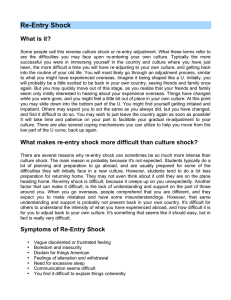
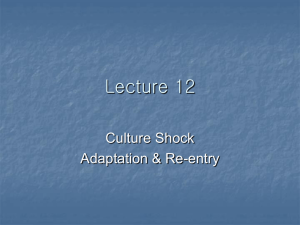

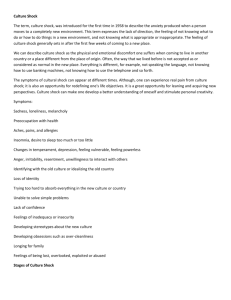
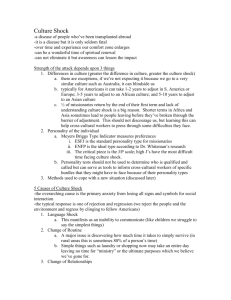
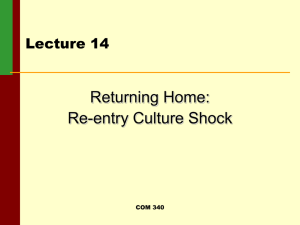
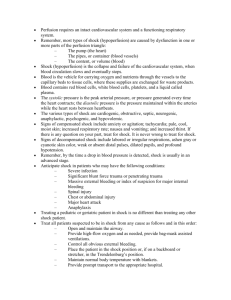
![Electrical Safety[]](http://s2.studylib.net/store/data/005402709_1-78da758a33a77d446a45dc5dd76faacd-300x300.png)
